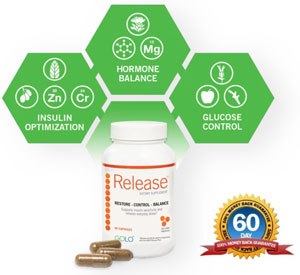Fitness
How do I increase my strength?
Published
2 years agoon
By
mbkteam
Strength training, often misunderstood as solely the domain of bodybuilders and weightlifters, is a crucial aspect of a well-rounded fitness regime for individuals of all ages and capabilities. It provides many benefits, from enhancing muscle mass and bone density to improving mental health and prolonging independence in older adults. In this comprehensive article, we delve into the multifaceted advantages of strength training, discuss effective methods, and offer practical advice to incorporate these practices into your daily routine.
The Importance of Strength Training
Strength training is essential for athletes and anyone interested in maintaining and improving their overall health and wellness. Regular strength training can combat the natural decline in muscle mass and bone density that comes with aging. It also helps manage weight by increasing the basal metabolic rate, which means you burn more calories even at rest. Furthermore, it enhances functional capabilities, making daily activities more accessible and reducing the risk of injuries.
Scientists at Wake Forest University School of Medicine are researching a particularly innovative approach to this. It involves using weighted vests to help maintain bone density during weight loss. These weighted vests challenge the skeleton throughout the day, mitigating the bone-density loss often associated with weight loss, especially in older adults.
Effective Strength Training Practices
While the benefits of strength training are clear, the methods employed to achieve these benefits can vary widely. Understanding the principles of effective strength training can help you design a program that meets your specific needs and goals.
Progressive Overload
Progressive overload is the cornerstone of strength training. It involves gradually increasing the weight, frequency, or number of repetitions in your strength training routine to challenge your muscles continually. This concept is vital because it ensures your muscles constantly adapt and grow stronger. According to BarBend, this technique also necessitates top-level planning or periodization, which means systematically organizing your workouts to increase intensity, volume, and frequency over time.
Compound Movements
Focusing on compound movements—exercises that engage multiple muscle groups—can significantly enhance the effectiveness of your strength training regimen. Exercises such as squats, deadlifts, bench presses, and overhead presses are essential because they build muscle mass and enhance functional strength.
For instance, performing a standing overhead press simultaneously engages the shoulders, triceps, and core, promoting total-body development. As noted in an article on Bodybuilding.com, such exercises should be prioritized early in your workout when your energy levels are at their highest.
Assistance Exercises
While compound movements form the backbone of a strength training program, assistance exercises target specific muscle groups and can help correct imbalances and enhance overall strength. These exercises can include isolated movements such as bicep curls, tricep extensions, or leg curls. They are handy for addressing weak points that might limit performance in compound lifts.
As recommended, structuring your workout to include 2-4 assistance exercises can ensure comprehensive muscle development. For instance, after your primary lift, you might perform sets of leg presses or bent-over rows to supplement the main exercises.
Periodization and Recovery
Periodization involves structuring your workout plan into cycles that vary in intensity, volume, and type of exercise to optimize performance and recovery. This can be divided into macrocycles (long-term goals), mesocycles (monthly plans), and microcycles (weekly routines). The goal is to avoid overtraining and ensure optimal recovery, crucial for muscle growth and injury prevention.
Recovery practices are equally important. Adequate rest, proper nutrition, and stretching or foam rolling techniques can significantly enhance recovery and performance. Without sufficient recovery, the risk of injury increases, and progress may stall.
Strength Training for Different Populations
One of the great aspects of strength training is its adaptability to various populations, including older adults, beginners, and those with specific health conditions.
Older Adults
Strength training is particularly beneficial for older adults, helping to maintain muscle mass, bone density, and overall physical function. Studies have shown that combining strength training with weight loss programs can improve fitness and reduce bone loss in older adults. Incorporating innovative methods, such as the INVEST program's use of weighted vests, detailed by the NIA, can further enhance these benefits.
Beginners
For those new to strength training, starting with foundational exercises and gradually increasing complexity and intensity is crucial. Beginners should focus on mastering the technique before adding significant weight to avoid injury. Engaging in a balanced program that includes compound and assistance exercises can ensure a well-rounded development of strength and muscle mass.
Specific Health Conditions
Strength training can also be tailored to address specific health conditions. For example, it can help manage chronic conditions such as arthritis, diabetes, and obesity by improving joint function, insulin sensitivity, and metabolic rate. Working with a healthcare provider or a certified trainer can help design a program that safely accommodates individual health needs and limitations.
Practical Tips for Incorporating Strength Training
Adding strength training to your routine doesn't have to be complicated. Here are some practical tips to help you get started and stay consistent:
Consistency Over Intensity
Regularity is more important than intensity, especially for beginners. Start with two to three strength training sessions per week, focusing on different muscle groups in each session. As you become more comfortable and your fitness improves, you can gradually increase the frequency and intensity of your workouts.
Warm-Up and Cool-Down
Always include a proper warm-up and cool-down in your routine to prevent injuries and enhance performance. A warm-up could include dynamic stretches or light cardio to increase muscle blood flow. At the same time, a cool-down might involve static stretching to improve flexibility and aid in recovery.
Proper Nutrition
Nutrition plays a vital role in strength training. Consume a balanced protein, healthy fats, and carbohydrates diet to fuel your workouts and support muscle recovery. Staying hydrated and possibly incorporating supplements such as protein shakes or branched-chain amino acids (BCAAs) can also enhance your performance and recovery.
Track Progress
Keep a workout journal to track your progress. Documenting your workouts, including the exercises, sets, reps, and weights, can help you monitor your improvements and stay motivated. It can also aid in adjusting your program as needed to continue progressing.
Seek Professional Guidance
If you're unsure where to start or how to progress, consider seeking guidance from a certified personal trainer. They can help design a personalized program based on your goals and fitness level, ensure you use the proper form, and provide motivation and accountability.
Conclusion
Strength training is an invaluable component of a healthy lifestyle, offering numerous benefits beyond physical appearance. By understanding and implementing effective strength training principles, individuals of all ages and fitness levels can improve their health, enhance their physical capabilities, and enjoy a higher quality of life. Whether you're an older adult looking to maintain independence, a beginner aiming to get fit, or someone with specific health needs, strength training can be tailored to meet your unique goals and challenges.
For more detailed information and to design a personalized program, check out resources like Mayo Clinic and Bodybuilding.com, which offer comprehensive guides and expert advice on strength training. Remember, the journey to strength and health is a marathon, not a sprint. Stay consistent, stay motivated, and enjoy the myriad benefits of a strong, healthy body.













